By Erik Anders Lang
The stories of Augusta National come to us in several forms. The first is from those who attend the Masters. The second is from the course—the sounds and the largess of this space speak volumes. And the third is from the people who inhabit the media center found just opposite the driving range. These journalists work day and night to bring you the Masters with words, images and voices. Golf Digest asked me to become one of them for a week. So as a former professional photographer I dusted off my right eye and squinted my way through the week to create a few images of the people and places that to me describe, in some small way, the many storytellers of Augusta National.
[divider] [/divider]
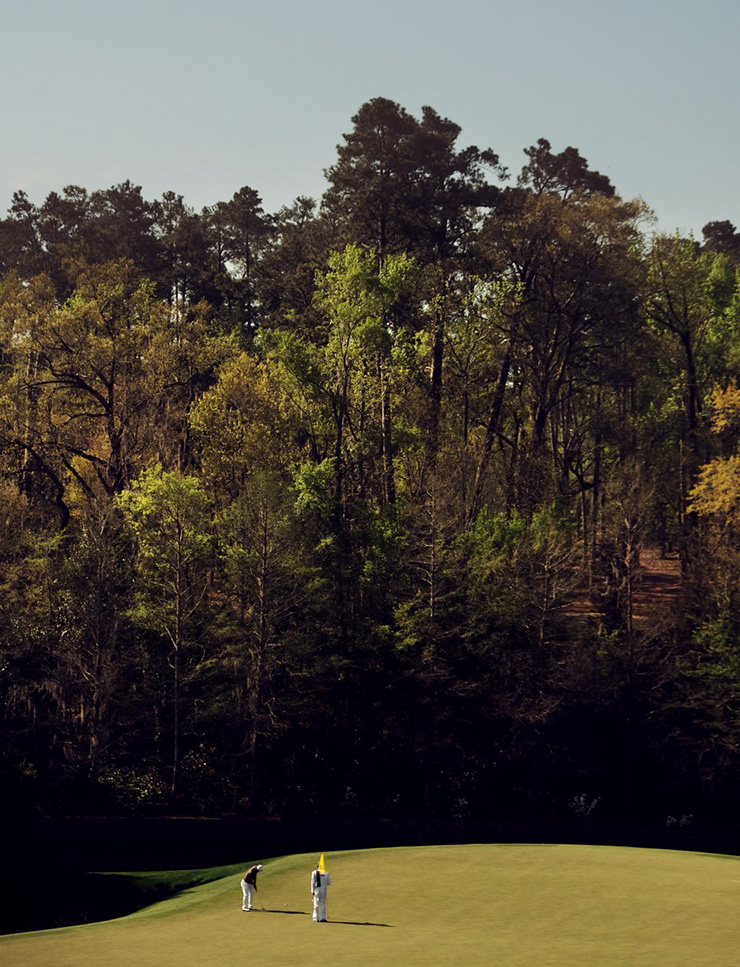
Augusta’s size is immense, and it has the reverse effect of a rearview mirror: things are larger in reality than they appear. Overlooking the 11th green and the impressive pines that surround it, the golfers seem like micro soldiers, each making their own trudge—some triumphant, most not—through this intricate puzzle. Perhaps they, too, are trying to make sense of Augusta’s enormous and bewildering scale.
[divider] [/divider]

James Yang’s witty, colorful illustrations force us to reimagine how we see the world. Here on assignment for Golf Digest to create illustrations for the 2019 Masters preview issue, Yang spends his days roaming the grounds with his sketchbook. His unique understanding of space is exactly why Golf Digest chose him to portray such a confounding landscape. “The space seems larger in person than I imagined and the elevation cannot be caught in two dimensions. It’s almost like a surreal world.”
[divider] [/divider]
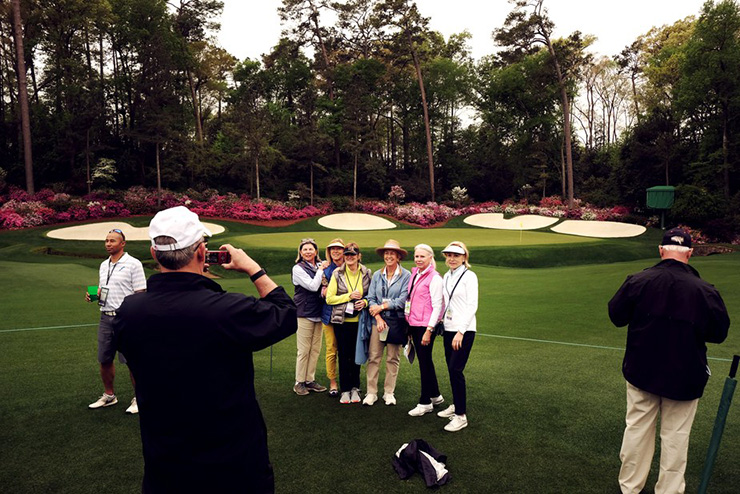
The patrons might be the most powerful storyteller of all. They’re constantly pausing and gazing, and the lucky ones remember that they can use the cameras hanging around their necks to document every specific moment. The patrons who tell the most compelling stories are lured to Augusta not by any specific golfer but by the tournament’s most famous celebrity—the course itself. The opportunity to spend a day roaming inside Augusta’s gates makes the destination feel far more like “interactive art” than a golf course.
[divider] [/divider]
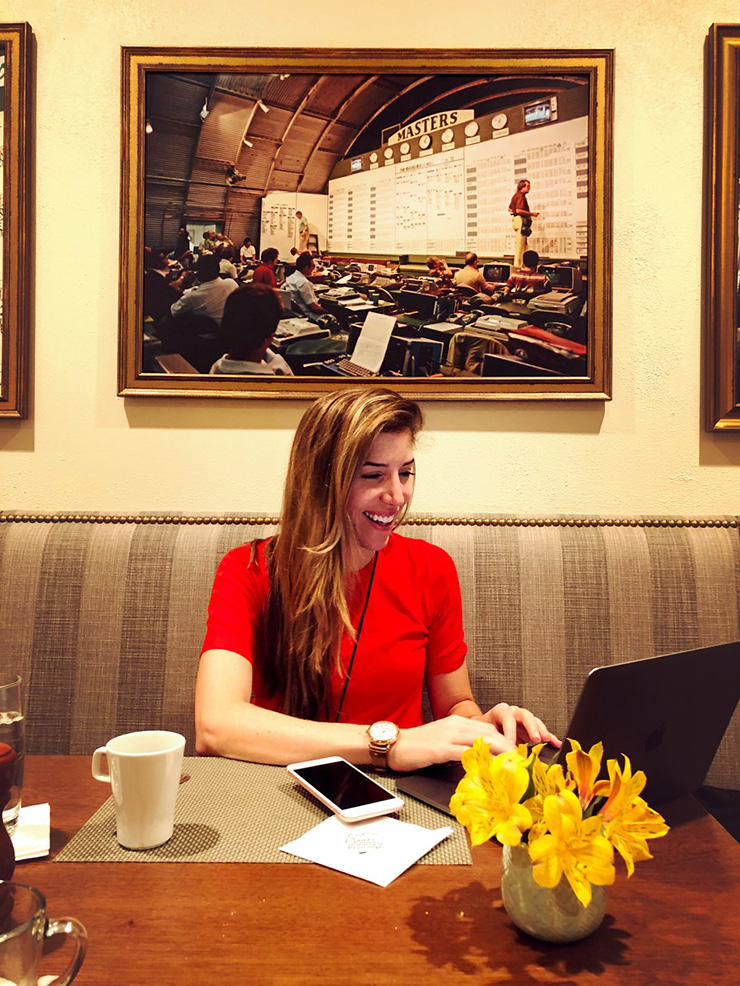
Using the term “interactive art” to describe Augusta wasn’t my idea, I borrowed that from Digest’s Ashley Mayo, pictured here in the Media Center working over her breakfast, a common routine for her. Ashley has spent 11 years with Golf Digest and one of her duties at Augusta is to ensure that a maximum number of people see, read and consume the brand’s content. Her unique view of the game and her insight into the new ways we absorb golf are particularly interesting. Read: the future of journalism is hard at work. And she loves her coffee.
[divider] [/divider]
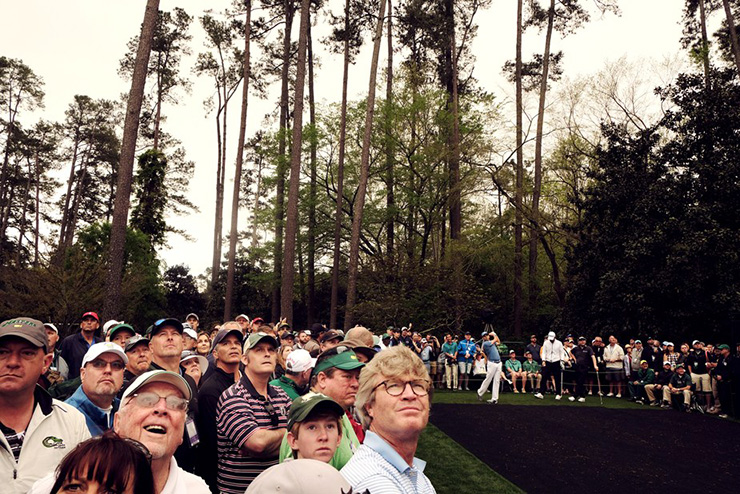
Patrons who work their way to the front row will be rewarded with the most up-close view of world-class golf swings. Here, the awe is more personal rather than universal, and you can just hear them asking themselves, “How do they do that?”
[divider] [/divider]

But perhaps there’s one person at Augusta who isn’t filled with awe. This is Dan Jenkins’ 68th consecutive year covering the Masters, which affords him special luxuries: a designated spot in the media parking lot, a prime seat in the media center, and palpable respect from every journalist in the building. He’s been credentialed for all four of the tournament’s media centers, and in this photo he stands in the current one, which is considerably fancier than any other. In his humorously dark perspective, he agrees this media center is perhaps “nicer than we deserve.”
[divider] [/divider]
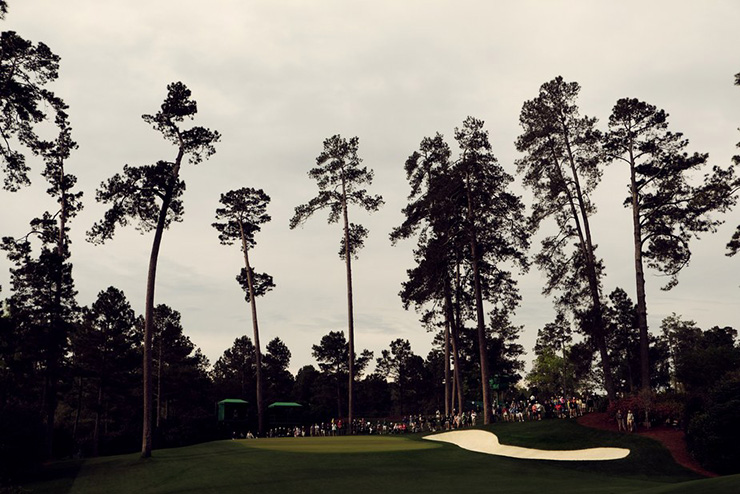
If the 10th hole could tell stories, it’d attract the most captive audience. You see, the 10th hole kickstarts the second nine, which on Sunday is the make-or-break moment of the Masters, and while it’s currently used as the second hole of every playoff, it used to be the first. Several green jackets have been won right here on this green. Its features are far more dramatic in person than any photo or televised coverage could convey. The 10th hole seems to have something in its soil that the other holes do not. Science doesn’t support this, but history probably does.
[divider] [/divider]
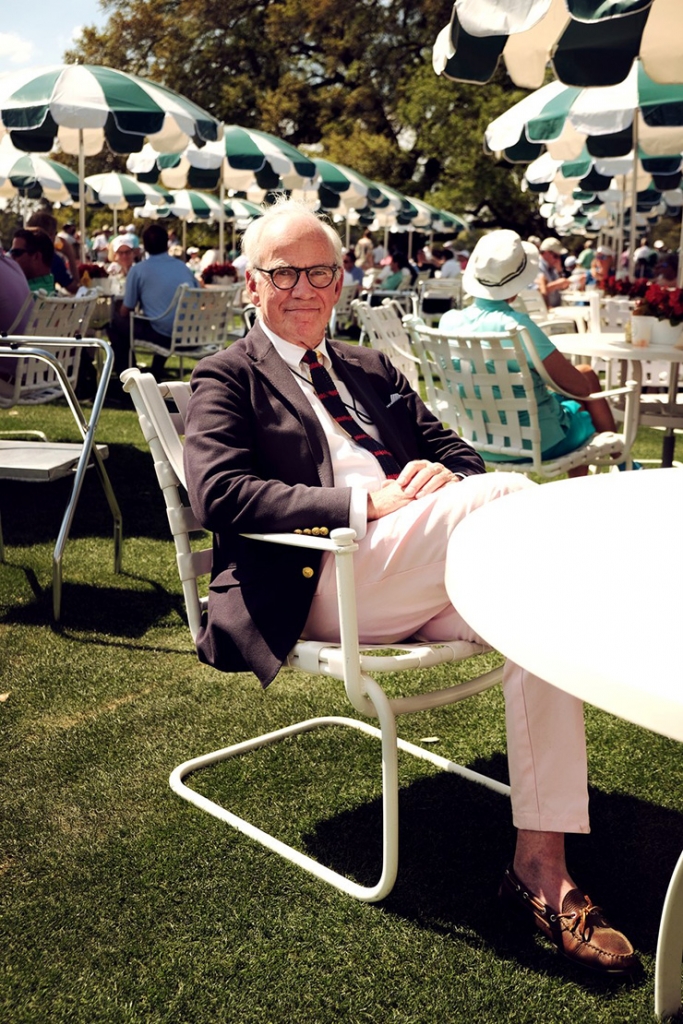
And finally, let’s take a seat with Marty Hackel, the longtime fashion editor for Golf Digest who considers Masters week a “sartorial Easter.” He says it’s “the quintessential dress-up golf event of the year.” Marty sits here at the epicenter of Augusta’s social scene that unfolds under a giant oak tree just between the clubhouse and the first tee. This oak was planted in 1865 and it’s hosted some of the most important conversations in golf’s history. Sip your transfusion slowly here friends, as this may be a cocktail hour unlike any other.
Erik Anders Lang is the host of Adventures in Golf, and the Erik Lang Show, a new podcast. Golf Digest invited him to the Masters to share his first impressions of the tournament and Augusta National.









